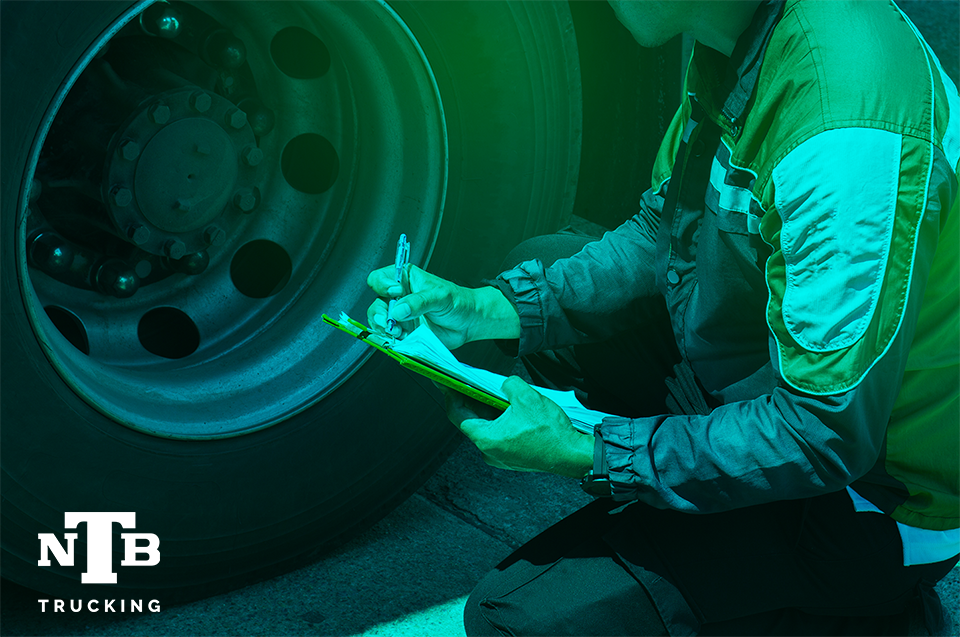How to Safely Handle a Tire Blowout

It goes without saying that avoiding a tire blowout with daily inspections and good maintenance is the best way to deal with potential problems before they happen. That being said, the longer you are on the road, the more likely it is that eventually, you’ll need to handle a blowout at some point in your driving career.
NTB Trucking wants our drivers and new recruits to have some good tools in their belts, including knowledge about dealing with the unexpected.
Mitigate the Risk
First off, let’s talk about proper tire inspections, which should be done daily or before each trip.
Check tire tread and pressure on all tires. An underinflated tire will generate a lot of heat, increasing the likelihood of otherwise unexpected tire failure. Make sure there is no separation or bulging on any of the tires. Rims need to be checked for any damage or wear from each prior trip. Inspect between the wheels of a dual wheel axle for debris. Any one of these steps can become tedious, but they are very important to keep you and drivers around you safe.
As a reminder to drivers, in 2016 the “FMCSA in collaboration with NHTSA, the Commercial Vehicle Safety Alliance (CVSA), and the Rubber Manufacturers Association (RMA) developed a visor card outlining tips for commercial tire safety to be distributed during International Roadcheck” FMCSA Commercial Tire Safety Tips
What to Do If You Have a Blowout
A seasoned driver knows how to handle just about any situation, but some reminders can be helpful to the newer driver and even to some seasoned drivers.
React calmly and hold the steering wheel with both hands as steady as possible to maintain control of your rig. Once you are able to keep the truck moving where you need it to, start decelerating by removing your foot from the accelerator and applying the jake brake along with some pressure on the brake pedal. Once you have slowed enough and have your vehicle under control, begin merging safely to the shoulder. Any sudden or severe movements of the steering wheel can have catastrophic consequences, so avoid overreacting and jerking the steering wheel as a defensive act.
Once you are safe to the side of the road, make yourself aware of what traffic is doing, and keep yourself safe. You may need a moment to get your wits about you, so give yourself time to catch and control your breathing and heart rate, while keeping in mind that you are required to get warning triangles or flares in place within 10 minutes. Staying calm can help keep you safe in the next steps.
Once you have determined it is safe, exit your truck and get your safety triangles. According to the FMCSA, to properly set up three reflective warning triangles or flares, the one closest to the truck should also be closest to the roadway. It should be set 4 paces, or 10 feet, behind the length of the truck, with the second triangle 40 paces, or 100 feet, further back and set centered with the truck. The third triangle should also be placed centered with the truck and another 40 paces back. This pattern directs oncoming drivers to merge away from your truck and from you.
Call dispatch immediately to let them know what happened, where you are, and what kind of assistance you will need. When you assess the damage to the tire, be sure to check the rim too. If the blowout happened on a single wheel axle, the rim is likely to have been damaged. Providing that information to dispatch will help you get back on the road quicker.
Summary
At NTB, the safety of our drivers and those we share the roadways with is our number one priority.
Psalm 46.1 “God is our refuge and strength, an ever-present help in trouble.”
Drive for a company who cares about your safety: Apply to drive with NTB
Ride with Pride: Shop NTB gear from mugs to sweatshirts.